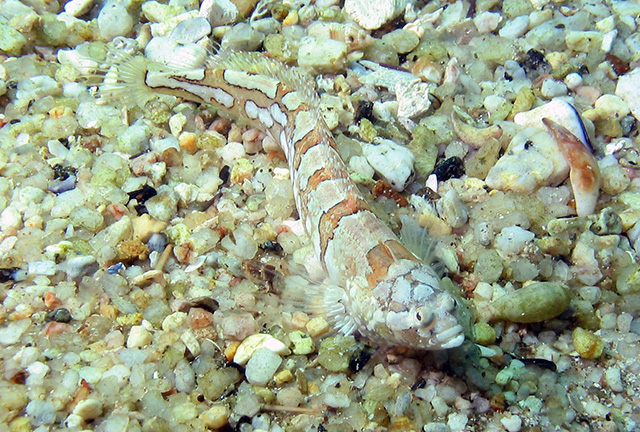| Clinidae (Clinids) |
| 10 cm TL (male/unsexed) |
|
demersal; marine; depth range 0 - 20 m |
| Southeast Atlantic: South Africa. |
|
Dorsal spines (total): 33-37; Dorsal soft rays (total): 7-11; Anal spines: 2-2; Anal soft rays: 29-31 |
| Inhabits intertidal sandy areas near kelp beds. Buries itself in the substrate by diving head first into the sediment and emerging slightly so that the top of the head and the dorsally-situated eyes protrude from the sediment surface. Alternatively, it may lie on the surface of the sediment and use the pectoral, pelvic and anal fins, together with undulatory movements of the body, to insinuate itself into the sediment in a fashion to that of Trachinus vipera. Again, only the top of the head and the eyes are left exposed. Once buried in the sediment, the fish remains there and is able to 'swim' through the sediment for short distances without re-emerging, although it occasionally emerges to undertake short forays (Ref. 28111) |
|
Least Concern (LC); Date assessed: 07 May 2010 Ref. (130435)
|
| harmless |
Source and more info: www.fishbase.org. For personal, classroom, and other internal use only. Not for publication.
